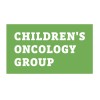Combination Chemotherapy Plus Peripheral Stem Cell Transplantation in Treating Children With Newly Diagnosed Neuroblastoma
Neuroblastoma

About this trial
This is an interventional treatment trial for Neuroblastoma focused on measuring regional neuroblastoma, disseminated neuroblastoma, localized unresectable neuroblastoma, stage 4S neuroblastoma
Eligibility Criteria
DISEASE CHARACTERISTICS: Newly diagnosed high-risk neuroblastoma Histologically proven AND/OR Bone marrow specimen showing clumps of tumor cells accompanied by elevated urinary catecholamines Age 1-30: Must meet one of the following INSS staging criteria: Stage IV regardless of biologic factors Stage IIa/IIb with MYCN oncogene amplification (greater than 10) and unfavorable pathology Stage III with MYCN oncogene amplification (greater than 10) or unfavorable pathology Initially stage I, II, or IVS, that has progressed without interval chemotherapy Under age 1: INSS stage III, IV, or IVS with MYCN amplification (greater than 10) Must enter neuroblastoma biology study COG-ANBL00B1 within 2 weeks of diagnosis and before entry on this study PATIENT CHARACTERISTICS: Age: 30 and under at original diagnosis Performance status: Not specified Life expectancy: Not specified Hematopoietic: Not specified Hepatic: Not specified Renal: Not specified Other: Not pregnant or nursing Fertile patients must use effective contraception PRIOR CONCURRENT THERAPY: Biologic therapy: Not specified Chemotherapy: See Disease Characteristics No more than 1 prior course of chemotherapy on the intergroup low- or intermediate-risk neuroblastoma studies prior to determination of MYCN status and Shimada histology Endocrine therapy: Not specified Radiotherapy: Prior emergent radiotherapy to sites of function- or life-threatening neuroblastoma allowed Surgery: Not specified Other: No other prior systemic therapy for neuroblastoma
Sites / Locations
- AFLAC Cancer Center and Blood Disorders Service of Children's Healthcare of Atlanta - Scottish RiteCampus
- Floating Hospital for Children
- Dana-Farber/Harvard Cancer Center at Dana Farber Cancer Institute
- CCOP - Columbia River Oncology Program
- Children's Hospital of Philadelphia
- Baylor College of Medicine
- CCOP - Scott and White Hospital
- CCOP - Marshfield Clinic Research Foundation
- Princess Margaret Hospital for Children
Arms of the Study
Arm 1
Experimental
All Patients
Outcomes
Primary Outcome Measures
Secondary Outcome Measures
Full Information
1. Study Identification
2. Study Status
3. Sponsor/Collaborators
4. Oversight
5. Study Description
6. Conditions and Keywords
7. Study Design
8. Arms, Groups, and Interventions
10. Eligibility
12. IPD Sharing Statement
Learn more about this trial
